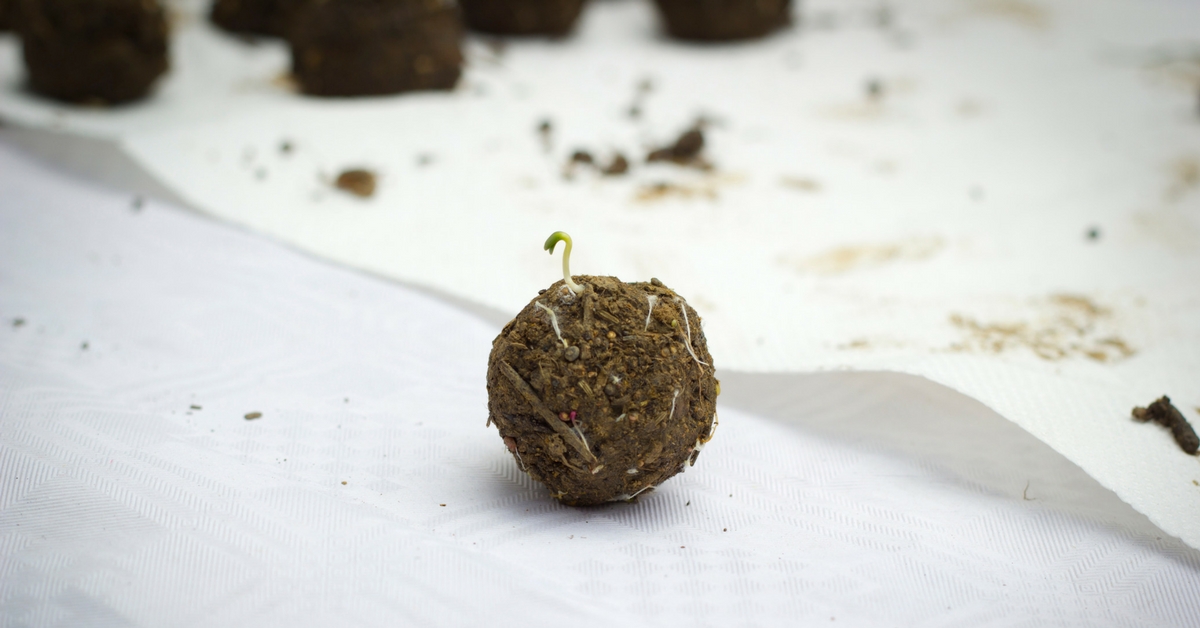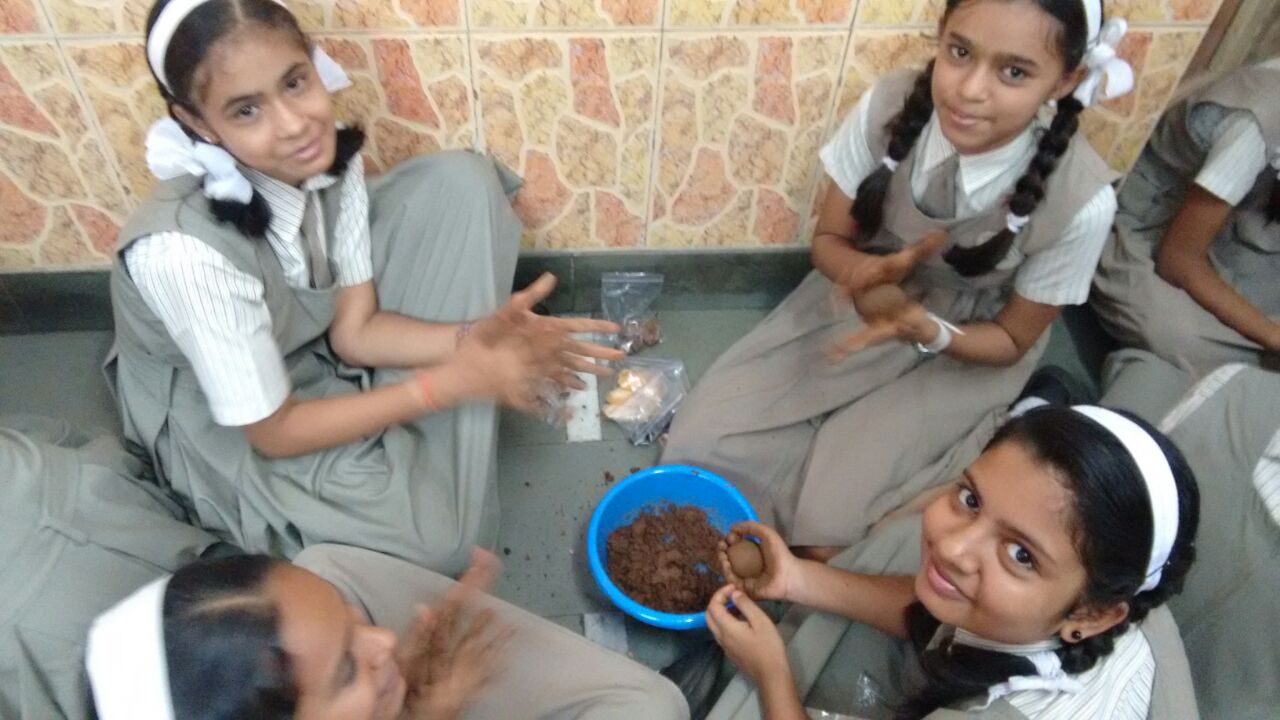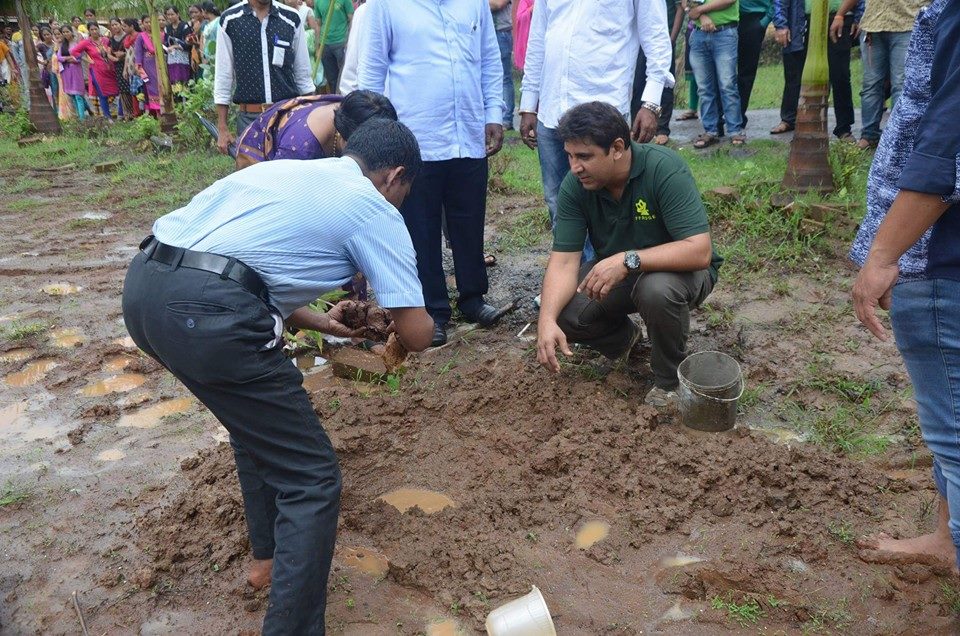From Homes to Jungles, These Easy-To-Make Seed Bombs Are Enabling Indians to Grow Plants Anywhere
At a time when trees have become endangered commodities, nature-loving citizens are greening their surroundings with an explosive idea—seed bombing!

We live in times when trees have become endangered commodities. Whether it is to build colossal apartments or metro stations and steel flyovers, trees are often the silent victims of modernization. While policy changes are crucial to bringing about sustainable change, nature-loving citizens of all ages have taken to greening their surroundings with an explosive idea—seed bombing!
A technique of planting trees by embedding organic seed balls in the ground, seed bombing is gaining popularity in many Indian cities.

Though it has found global fans in recent years, historical records suggest that seed bombing existed even in ancient Egypt. Its popularity is attributed to Japanese farmer Masanobu Fukuoka, who repurposed the technique for boosting food production in his farms. Since then, seed bombing—also known as aerial reforestation, seed balling and seed grenades—have been employed in many countries including India.
Plant a Tree and Gift a Living is an attempt by The Better India along side NAATA Foundation to plant 5000 fruit trees in Aarey Milk Colony, Mumbai. Each of these saplings need an approximate amount of Rs 100 for their nourishment over the next 2-3 years, after which they will be sufficient to supplement the income of the community by adding an additional source of livelihood, while also restoring the green cover of the area.
Contribute for the campaign here.
Unable to view the above button? Click here
In Mumbai, seed bombing is actively practiced by Friends For Reviving Our Green Earth (Ffroge), a community of wildlife photographers and nature enthusiasts. Vikas Mahajan, the group’s founder and a businessman says, “It’s necessary to tell people to stop cutting trees, but it’s even better to start planting them.” The community hit upon seed bombing when conventional tree planting did not yield results.
“We began to mix the seeds with mud and cow dung,” Vikas says. “We made little balls of them, sort of like laddus and they helped to bring down the mortality rate of trees by 50%. The cow dung helps to keep animals and pests away, and we see to it that we plant them in area. It’s not possible to make balls of big seeds, like mangoes—so we take it to forests and plant them with the mud and dung instead.”
While packaged seed balls and kits are becoming available in horticultural units and online stores, it is not very difficult to give DIY a shot as well. In fact, Vikas suggests that it is far more effective to start seed bombing locally, than donating or procuring seeds from far-flung places. Here’s a step-by-step with inputs from the Ffroge team.
1. Get your hand on the right seeds
Your kitchen is the best source to get some seeds and start the process. From lemons to herbs like cumin and mustard, you will find most of these seeds in your plate or spice rack. And these are perfectly good to use. But not every seed works, according to Vikas.
“If you ask me to grow apples in Maharashtra, it’s not going to happen,” he says. You have to choose seeds that are endemic to the region. Start by making a list of local plants before you start collecting the seeds.”
2. Use the wash-and-dry technique to prep the seeds
Once you have selected your seeds, make sure you wash them. This is especially important for seeds that you may have sucked on—like mangoes—or partly consumed.
Next comes the drying process. Remember that moisture is crucial for seed bombing to succeed. “A lot of people take their seeds to dry on the roof,” he says, “but it makes them too dry or use. Instead keep them on your window sill.” Once the seeds have dried, you can store them in an airtight container till you are ready to craft your ‘bombs’.
3. Make your seed bombs when the timing is right
 Making seed bombs. Source: Facebook
Making seed bombs. Source: Facebook
To reiterate, moisture is mandatory for seed bombs to germinate. That’s why Vikas recommends waiting for the rainy season to start making the balls. Mix the seeds with 3/4th mud and 1/4th cow dung and make them into small but firm balls. You can also replace cow dung with other forms of organic compost. Give them some time to air dry. You are almost done!
4. Bombing the earth with seeds
 Source: Facebook
Source: Facebook
Now comes the final part. Contrary to popular belief, seeds bombs are not meant to be buried in the ground. Instead, embed them partially in the ground.
“Make a small cup-shaped hole in the ground. Plant the ball so that it’s partly in the ground and partly above. With rain, the plants will start germinating and growing into trees.”
Though cow dung can prevent pests and animals from munching down the budding trees, try and choose free spaces for best results. Forest areas are ideal for seed bombing of bigger trees like banyan, but you can also use the technique for fruit trees and smaller plants in public spaces and small patches of land in your neighbourhood.
You might also like: Time to Reimagine Stationery! How About Buying Paper & Pencils That Can Turn Into Veggies?
To be fair, seed bombing is not easy. It takes perseverance and trial-and-error to get things right. If you find your initial effort failing, reach out to NGOs and seed bombing groups. Most of them are happy to help with queries and share their resources. The internet is a treasure trove of ideas and even offers alternate seed balling techniques.
The world needs more trees, and seed bombing may well be a step in the right direction.
For updates on seed bombing, join Ffroge’s Facebook group. To contact Vikas Mahajan, click here.
Plant a Tree and Gift a Living is an attempt by The Better India along side NAATA Foundation to plant 5000 fruit trees in Aarey Milk Colony, Mumbai. Each of these saplings need an approximate amount of Rs 100 for their nourishment over the next 2-3 years, after which they will be sufficient to supplement the income of the community by adding an additional source of livelihood, while also restoring the green cover of the area.
Contribute for the campaign here.
Unable to view the above button? Click here
Featured image: Flickr
Like this story? Or have something to share? Write to us: [email protected], or connect with us on Facebook and Twitter.
NEW: Click here to get positive news on WhatsApp!
If you found our stories insightful, informative, or even just enjoyable, we invite you to consider making a voluntary payment to support the work we do at The Better India. Your contribution helps us continue producing quality content that educates, inspires, and drives positive change.
Choose one of the payment options below for your contribution-
By paying for the stories you value, you directly contribute to sustaining our efforts focused on making a difference in the world. Together, let's ensure that impactful stories continue to be told and shared, enriching lives and communities alike.
Thank you for your support. Here are some frequently asked questions you might find helpful to know why you are contributing?


This story made me
-
97
-
121
-
89
-
167














